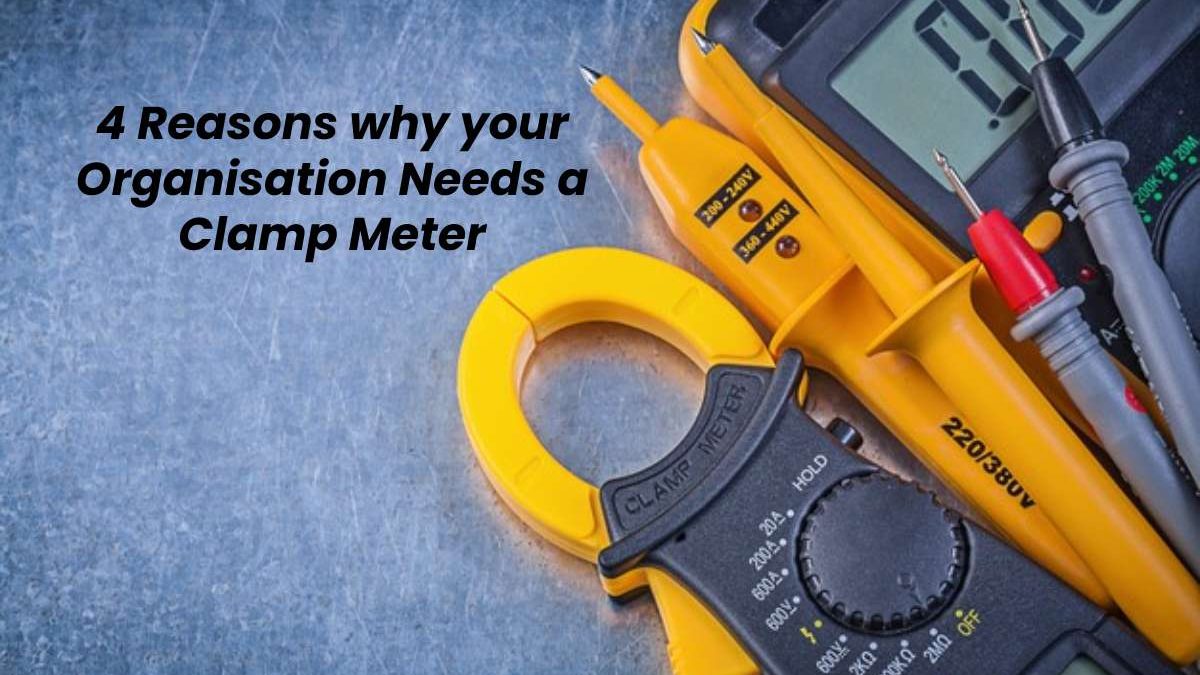While pliers, drills and screwdrivers will be found in every manual professional’s toolbox, sometimes you’ll discover that your peers and colleagues have been using an ingenious tool or instrument that you’ve never even heard of. “What’s that?” is often the question asked immediately before learning about clamp meters – a combo of a digital multimeter and a current sensor.
First up, a digital multimeter is – like the clamp meter – an electrical test tool used by electrical systems technicians that measures the key electrical values: voltage, current and resistance. It’s called a ‘multi’ meter because it has successfully combined the basic features and functions of separate test tools for voltage (voltmeter), amps (ammeter) and ohms (ohmmeter).
But while the digital multimeter uses probes to do the voltage testing, the clamp meter features a distinctive claw-shaped clamp device to measure current. The hinged clamp jaws can be easily opened and then clamped around any conductor, cable or wire to measure the current while the circuit is fully active – because the jaws never need to make actual physical contact. While the clamp is covered in plastic, what lies beneath is ferrite iron whose configuration detects and measures the magnetic field that is produced by the current within.
You will find clamp meters in use across the spectrum of industries involved in the vast world of electrical systems, for detecting faults and repairs, performing circuit tests, and doing other checks and maintenance.
But why might your organisation be considering the need for a clamp meter?
Table of Contents
1. The safety
Before modern clamp meters became so readily accessible and convenient to use, the ‘old school’ way to measure current involved actually cutting into a wire to insert another kind of current meter’s leads into the circuit. It goes without saying that this is inherently dangerous – which is arguably the biggest reason why your organisation might be considering one. Used properly, the technician never needs to make actual contact with the conductor in question.
2. The convenience
Whether testing high or low currents, the latest clamp meters on the market are steadily replacing the need to ever actually break into the current that you want to test. Not just that, the circuit itself remains fully active during the measurement phase, providing a major productivity and efficiency boost to every business that has a need for one.
3. The flexibility
Finally, the steady technological development in the world of clamp meters means you really can pair your organisation’s specific applications with the specific device you should acquire. While it’s true that organisations with the occasional need for basic current readings should consider a standard or more generic clamp meter for its multi-use convenience, the device you select can be highly specialised in terms of the features – including the clamp size.
4. The features
But as well as clamp size, there’s an awful lot of devices with some pretty impressive features to consider for your specific needs and budget. We’re talking about:
- Bluetooth
- Smartphone integration
- Advanced fault detection
- Data storage
- Real-time reports
- LED lights
- High voltage warnings.
If you’re ready to start selecting a clamp meter, it’s crucial to match the precise application with the device you select. For instance, you might need a different model for testing very low current or current leakage (ie for RCD trips), or a more generic or pocket-sized clamp for most basic residential and commercial settings. There are clamps with more stringent industrial safety ratings, lightweight ones for those tricky-to-reach spots, and many other considerations that will affect the final price and suitability for your intended uses. Remember, an industry specialist will always be able to help guide your choice, so never be shy to ask for experienced assistance.

